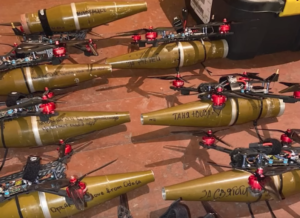India has been trying to get into semiconductor fabrication for a while now, and after announcing a $10 billion investment fund, and with China locked out of so much semiconductor technology, there have been a lot of news bubbling up, but I want to focus on the Foxconn/Vedanta fab project.
The Economic Times is reporting that Foxconn and Vedanta are seeking to bring in European chipmaker STMicroelectronics as their technology partner in their proposed India manufacturing unit. The two companies announced their joint venture February 2021, with Foxconn as lead partner. Vedanta are reportedly seeking to onboard a CXO to head their semiconductor business.
Snip.
Vedanta-Foxconn are set to finalize a location for their facility in the next few weeks. The consortium are reportedly seeking a 800-1000 acre land parcel that is also well connected with Ahmedabad. The Gujarat government, as of media reports on September 16, showing sites at Sanand and Mandal-Becharaji in Ahmedabad district, two locations near Vadodara in central Gujarat, Dholera, Himmatnagar, Jamnagar, and Kutch. The plant has to be located at a distance from national and state highways so to cut off any vibration from heavy traffic movement. Further, no other major industry should be located in its vicinity.
Vedanta and Foxconn, in a 60-40 joint venture, will be setting up India’s first semiconductor production plant, a display fab unit, and a semiconductor assembling and testing unit over 1000 acres in Ahmedabad, state of Gujarat. The plant will begin production in two years as Foxconn plays the role of technical partner while Vedanta provides financial backing. The investment is worth over INR 1.54 trillion (approx. US$20 billion) and semiconductor manufacturing will be carried out by the holding company, Volcan Investments Limited.
Foxconn is a serious tech player that has serious mastery over the value-added chain. $20 billion, assuming it actually materializes, is real money, even in semiconductors. It’s right around the threshold to build a state of the art sub-10nm fab, even though it’s apparent that that’s not what they’re aiming for.
Vedanta, on the other hand, is another matter. They’re “a globally diversified natural resources company. We extract and process minerals, oil and gas.” Yeah, a natural resources company generally isn’t who you want running your fabs. Another strike is their talking about “Net Zero Carbon by 2050,” which suggests they may have their fingers in political scam pies.
STMicroelectronics is a real chipmaker that runs real fabs, but not the first company I would turn toward to purchase cutting edge process technology from, nor even the tenth. The fact that STM has already announced plans to team up with Global Foundries to build a new 300mm fab next to their existing fab line in Crolles, France in June 2022 makes me even more suspicious. Information on that existing 300mm Crolles fab is sketchy, and I know that for a long time it was a pilot rather than a production line, and I can see no evidence that it was ever expanded to volume production.
The fact that they plan to set set up a fab, a display fab, and a slice-and-dice packaging facility suggest a certain lack of focus. Flat Panel Display (FPD) fabs use familiar semiconductor steps, but the machines are very different because the substrates are different, and Samsung has huge dedicated display fabs. It’s setting up a modern chip fabrication plant that’s the difficult part, and while this combination could probably put together a solid trailing edge fab, like Bosch’s new 65nm fab. But that only cost $1.2B. Maybe they plan to build something in the 20-10nm range.
“The plant will begin production in two years.” Yeah, that’s not happening. Even giant players like TSMC and Intel generally take 2.5-3 years to stand up a new fab from breaking ground to starting up the line.
This could still happen, but the details are very sketchy. The slice and dice operation could be set up without too much difficulty, but it’s a low volume, low tech spinoff operation. A display fab would be more difficult, but it’s doable, though again, probably not in two years. But a real 300mm wafer, sub-65mn node microchip fabrication plant in India? I don’t see this set of players carrying that off well in three years. Five sounds more realistic, and that’s assuming the deal doesn’t fall apart.
Other India semiconductor plays sound even more nebulous.
Taiwan’s TSMC is also looking to set up a chip-fabricating factory in India, and is currently speaking to various government agencies to check the viability of setting up factory in India. TSMC already has one of its largest offices outside of Taiwan in India in Bengaluru, Karnataka, from where it provides support to its’ existing customers in Asia, Europe and North America and supports and encourages fabless companies in India in design and growth.
Ever since news N Chandrasekaran – chairman of the Tata group, announced that Tata Electronics (TEPL) will set up an Outsourced Semiconductor Assembly and Test (OSAT) facility in India, there has a been a lot of speculation, according to which, TSMC and Tata may enter into a partnership.
Besides TSMC, Powerchip Semiconductor Manufacturing Corporation, a Taiwanese chipmaker, is also in exploratory negotiations with several Indian companies to help establish new chip operations in the country, as per a report by Taipei Times. According to the newspaper, the memory chip maker’s announcement put an end to six months of speculation that it was planning to invest in India to diversify its operations despite Taiwan’s rising geopolitical tensions.
“Speaking to,” “exploring plans,” etc. These are very wishy-washy terms. Powerchip is a memory manufacturer that’s hardly flush with cash. I’m sure TSMC is talking to a lot of countries about fabs, but their newest one is under construction in Arizona.
International Semiconductor Consortium (ISMC), a joint venture between UAE’s Next Orbit Ventures and Israel’s Tower Semiconductor, was supposed to spend $3 billion to get started on a 40-65nm analog fab right about now, but I don’t see signs that’s actually happened. Tower is a real foundry, and the $3 billion pricetag and 4-5 year timeline seems realistic, but I’m not 100% sure they’re still interested in the project after Intel announced plans to buy them about a year ago. And having to bring in Arab petrostate funding for your venture is seldom a sign of strong financial viability.
There’s no reason you can’t build one or more modern fabs in India, but so far no major chip manufacturer has chosen to do so, despite the supposed availability of $10 billion in government subsidies.



